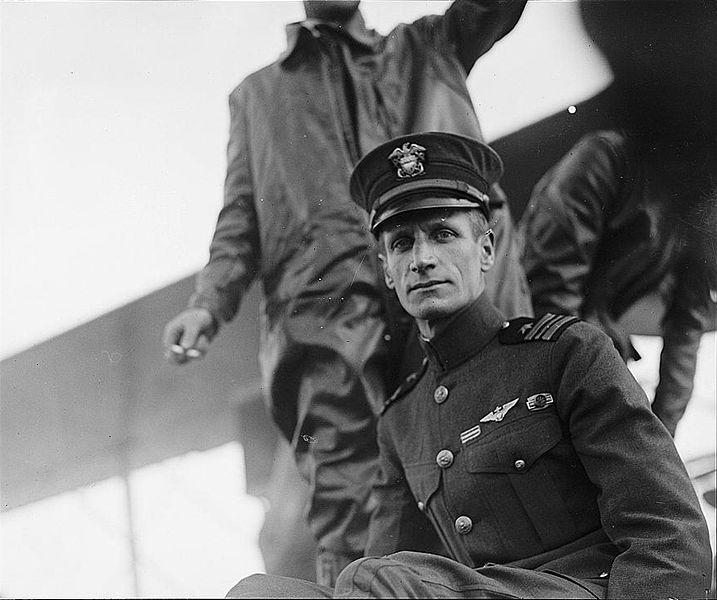
On 16 May 1919, three naval aircraft, NC-1, NC-3 and NC-4 launched from Trepassey Bay, Newfoundland to attempt the first crossing of the Atlantic by aircraft. The NC (Navy Curtiss) aircraft were built by the Glenn Curtiss company and were nicknamed "Nancy" boats. They were developed for World War I to combat German submarines, but the war ended before they could demonstrate their true capability. The aircraft originally was designed with three engines, but during testing a fourth was added giving the NC aircraft three tractor engines (in front) and one pusher (behind). Maximum airspeed was 90 mph and the estimated maximum range of the aircraft was 1,500 miles.
Originally, the Navy had planned to use four aircraft in the historic transatlantic flight, but NC-2 had been damaged in a fire and was cannibalized for parts. So three "Nancy boats" would make the attempt. NC-1 was commanded by Lieutenant Commander Patrick Bellinger, NC-3 by Lieutenant Commander John Towers and the NC-4 by Lieutenant Commander Albert Read .
LCDR Mitscher seen above would go on to serve as a carrier admiral in World War II at such battles as Midway and the largest carrier fight in history at the Battle of the Philippine Sea aka Great Marianas Turkey Shoot.


All navigational equipment had been developed and checked by Lieutenant Richard Byrd (later flew over both North and South Pole). The aircraft launched at 6 PM...stay tuned and see what happens to our intrepid aviators, some of you may remember the story...but who makes it across the pond?


